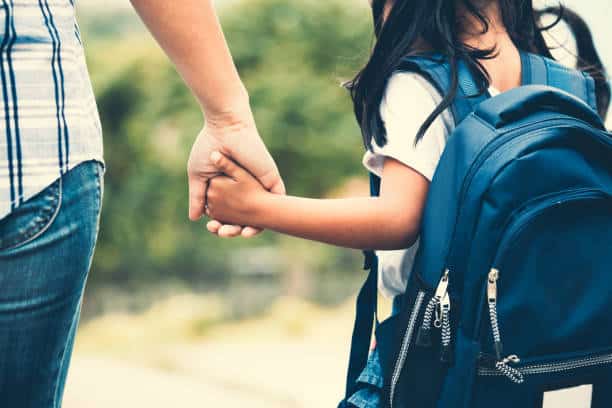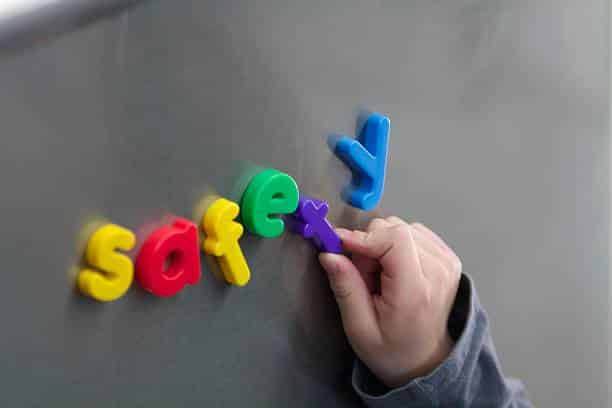HOW TO TEACH HANDWRITING TO THE CHILDREN? FACTS Handwriting is crucial because recent brain scan studies have shown that early handwriting skill helps kids learn to read. It is a fundamental skill that plays a very crucial role in a child’s educational foundation and their cognitive development. Teaching handwriting tactfully and effectively can help the parents
Child Safety and Awareness: Essential Steps to Protect Our Children
Child Safety and Awareness is a fundamental aspect of parenting that ensures children grow up in a secure and nurturing environment. In a world where potential dangers can arise both online and offline, teaching children safety skills and fostering their awareness is not just beneficial—it’s crucial. By empowering children with the knowledge of how to respond to unsafe situations, we give them tools to make informed choices and protect themselves.

What Is Child Safety and Awareness?
- Child safety refers to measures and precautions that protect children from harm, injury, or exploitation. However, awareness is the cornerstone of safety, as it helps children understand potential dangers and how to navigate them confidently.
The goal of child safety education is twofold:
- Equipping children with skills to identify risks and react appropriately.
- Encouraging open communication between children and caregivers about uncomfortable or unsafe situations.
Personal Care and Safety
Teaching children personal care and safety starts with setting boundaries. Kids should know what personal boundaries are and why it’s essential to maintain them. Parents can guide their children by:
- Discussing “safe zones” and helping them identify trusted individuals.
- Using clear language about body autonomy and private parts.
- Practicing scenarios where they confidently say, “No!” to inappropriate behavior.
The Importance of Stranger Awareness
One of the pillars of child safety is stranger awareness. Children should understand the risks of interacting with strangers and how to respond if approached by someone they don’t know. Simple rules, such as “Never accept gifts or rides from strangers,” go a long way. Parents should encourage kids to trust their instincts and seek help from a trusted adult if they feel uneasy.
Online Safety for Kids
The digital age has brought countless benefits, but it has also introduced unique risks. Teaching children about online safety is essential in a world dominated by technology. Kids should learn to:
- Avoid sharing personal information with strangers online.
- Be cautious about accepting friend requests or messages from unfamiliar people.
- Recognize signs of online scams and report suspicious behavior.

Safety at Home
Creating a safe home environment involves proactive steps to prevent accidents and teach children basic safety measures. Key areas of focus include:
- Fire safety: Teaching children what to do in case of a fire.
- Electrical safety: Avoiding overloaded sockets and using covers on outlets.
- Preventing accidents: Securing sharp objects, medicines, and cleaning supplies.
Safety in Public Places
When out in public, children face risks that they must be prepared to navigate. Teaching them about road safety, water safety, and appropriate public behavior is crucial. Practical tips include:
- Always using crosswalks and looking both ways before crossing the street.
- Swimming only in supervised areas.
- Staying close to parents or guardians in crowded places.
Dispelling Myths About Child Abuse
Misconceptions about child abuse can hinder its prevention. Common myths include:
- Belief that abuse is only violent or committed by strangers.
- Assumptions that abuse doesn’t occur in reputable families.
- Gender biases that overlook boys as potential victims.
Understanding these myths helps adults remain vigilant and proactive in protecting children.
Good Touch vs. Bad Touch
Children often encounter physical interactions, but not all are safe or welcome. Teaching children the difference between good touch and bad touch can empower them to recognize and report inappropriate behavior.
- Good touch: Hugs or pats from trusted family members that feel safe and comforting.
- Bad touch: Any contact that makes a child feel uncomfortable or is kept secret by the perpetrator.
Role-playing scenarios can help children practice recognizing and responding to these situations.

Child Safety Education: Building Confidence and Awareness
Children must be taught to assert themselves and seek help when necessary. This involves:
- Teaching them phrases like “No, this is wrong” and “This is my body.”
- Encouraging them to share any uncomfortable experiences with a trusted adult.
- Familiarizing them with the concept of private parts and who is allowed to touch them (e.g., a doctor with a parent present).
Recognizing Early Warning Signs
Children may not always articulate their discomfort verbally, but they can exhibit physical signs of distress. Parents should watch for:
- Nervous behaviors, such as shaking or sweating.
- Complaints about an upset stomach.
- Signs of withdrawal or fear around certain individuals.
These early warning signs can indicate that a child feels unsafe and needs support.
The Role of Secrets in Child Safety
Teaching children not to keep harmful secrets is another critical element of safety education. If someone asks them to keep a secret that feels uncomfortable, they should feel empowered to share it with a trusted adult.
Building a Safety Network
A safety network is a group of trusted adults children can turn to in difficult situations. Encouraging kids to identify 4–5 people they trust deeply (parents, relatives, teachers, etc.) helps them feel secure and supported.
The Role of Parents in Child Safety and Awareness
Parental involvement is vital in fostering a safe environment for children. When parents are approachable and supportive, children are more likely to share their concerns. Open communication builds trust and ensures children feel valued and heard.
F.A.Q
Stranger awareness educates children about potential dangers and equips them to respond assertively to unknown individuals.
Bad touch includes any physical contact that makes a child feel uncomfortable, scared, or ashamed, such as touching private parts or forced hugs.
Parents can teach safety through age-appropriate conversations, role-playing scenarios, and consistent reinforcement of boundaries and rules.
Children should immediately seek out a trusted adult, explain their feelings, and avoid situations or individuals that make them uncomfortable.
Early warning signs like shaking, sweating, or a racing heart can help children recognize unsafe situations and act accordingly.
Parents can childproof their homes, teach basic safety rules, and foster open communication to create a secure and nurturing environment.
Conclusion
Child safety and awareness are integral to raising confident, well-informed children. By addressing topics like personal boundaries, online safety, and stranger awareness, parents and caregivers can empower kids to navigate challenges and protect themselves. An open dialogue and a supportive environment are key to building trust and ensuring children feel safe and secure in every aspect of their lives.
Related Posts
Previous Story
No story to show!
Next Story

